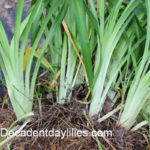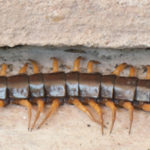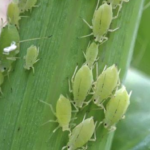
Red Trumpet Vine Advice
Trumpet Vine Know How to Grow Trumpet Vines
 Trumpet vine or red trumpet creeper has the botanical name Campsis Radicans grows and blooms well all over Australia. The flowering creepers grow 4 inch long trumpet shaped blooms on vines that can be invasive. The plant is native to southern U.S and U.S gulf coast. The plant needs some support to climb along a fence or trellis or grown up tree trunks. The flower colour ranges from yellow to orange to red. The flowers appear throughout summer and autumn in Australia flowering normally with red hot pokers making them great companion plants. With the best growing conditions, the trumpet vines are so vigorous they can reach up to a height of 30 to 40 feet in a single growing season and will need to be maintained and kept under control. This requires caring and pruning to reduce the size and invasiveness. The trumpet vine prefers exposure to full sun but can thrive in partly shady areas. Plants need compost rich soil to ensure fast growth and blooming. The plant grows well in warm coastal areas but needs protection from heavy frost and cold winds even though it is a deciduous grower for a short period in late winter. Once established the plants are easy to grow, hardy and drought resistant. The brightly coloured, tubular flowers appear in clusters at the ends of the branches. The flowers will attract in the bees, birds and butterflies to the garden. After the red trumpet creeper finishes flowering the vine will produce bean shaped flat seed pods.
Trumpet vine or red trumpet creeper has the botanical name Campsis Radicans grows and blooms well all over Australia. The flowering creepers grow 4 inch long trumpet shaped blooms on vines that can be invasive. The plant is native to southern U.S and U.S gulf coast. The plant needs some support to climb along a fence or trellis or grown up tree trunks. The flower colour ranges from yellow to orange to red. The flowers appear throughout summer and autumn in Australia flowering normally with red hot pokers making them great companion plants. With the best growing conditions, the trumpet vines are so vigorous they can reach up to a height of 30 to 40 feet in a single growing season and will need to be maintained and kept under control. This requires caring and pruning to reduce the size and invasiveness. The trumpet vine prefers exposure to full sun but can thrive in partly shady areas. Plants need compost rich soil to ensure fast growth and blooming. The plant grows well in warm coastal areas but needs protection from heavy frost and cold winds even though it is a deciduous grower for a short period in late winter. Once established the plants are easy to grow, hardy and drought resistant. The brightly coloured, tubular flowers appear in clusters at the ends of the branches. The flowers will attract in the bees, birds and butterflies to the garden. After the red trumpet creeper finishes flowering the vine will produce bean shaped flat seed pods.
Propagation through Vine cuttings
Though the propagation of the trumpet vine can be done using seeds, division of roots, the easiest method is to use vine cuttings. Summer is the best time to propagate the plant using semi-hardwood cuttings. Take a cutting from just below a node using a sharp knife. You need to remove the leaves in the bottom part of the cutting and plant them in well drained potting soil. Make sure that at least 2 nodes are below the ground level. Dipping the cut ends in rooting hormone promotes the growth of new roots faster. Place the plant in a shady area and water thoroughly. Rooting will occur within one month and now you can transplant it to a new location. You can also wait till next spring to replant them.
Start the orange trumpet vine through layering the vine. Successful propagation through layering involves exposing the cambium layer and pegging the vine down just below ground level with a bent peg or brick to hold the cane in place and water it. Within weeks where the plant hits the ground will form roots. You can water the vine well then cut the new plant below the roots and dig to transplant the plant to a suitable new location of the garden.
Care should be taken while handling the plants they are poisonous. Though the orange trumpet vine looks good in your landscape they can cause skin irritation. Contact with the plant parts like foliage, stem when pruning or while making cuttings for propagation can cause skin irritation, redness, itching, inflammation etc. This plant is usually free from pest attacks and diseases. It is necessary to prune the spent flowers to encourage the growth of new shoots in the spring.
When is the Best Time to Prune Trumpet Vine?
The only maintenance required by this plant is pruning. Pruning can be done during spring or autumn.
- Pruning helps the plant to establish a strong framework.
- It is necessary to start pruning the plant the year after you plant them.
- Pruning should be done after frosts have finished in early spring, pruning other times of the year will result in no flowers, the flowers grow on the tips of new seasons growth.
- The plant produces many basal shoots and it is necessary to reduce the number of shoots to ensure proper flowering.
- You can keep the best and strong shoots and prune the rest of the shoots.
- You can cut back 95% of the plant yearly to control the growth of the plant.
Care must be taken when growing this plant on walls of buildings. The orange trumpet vine has aerial rootlets that cling to walls to help the vine to climb up wall surfaces. Like some ivy vines, these aerial roots will damage the paint or bricks, climb into walls of houses by leaving their suction cup roots behind. If the vine is ever pulled down you will see that the wall is looking like a mess. So be careful where you let this plant grow or climb.
It is not a good idea to use this plant as a ground cover, it spreads by underground runners and can come up everywhere and choke your flower garden killing your existing plants and trees. You will also need to remove the unwanted suckers to prevent invasion of the plant to nearby areas. A tip if you want this plant to be less vigorous, grow it in very poor soil with less water this will help tremendously.
With proper pruning and care, you will be able to make an excellent looking colourful garden using this bright flowered plant.

























